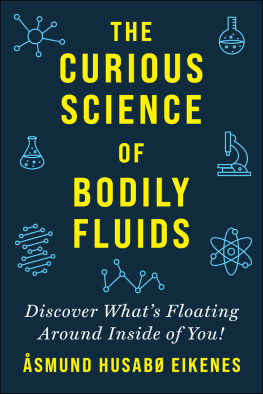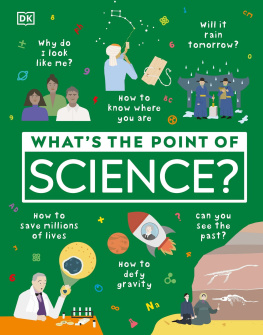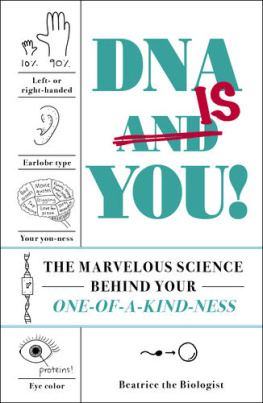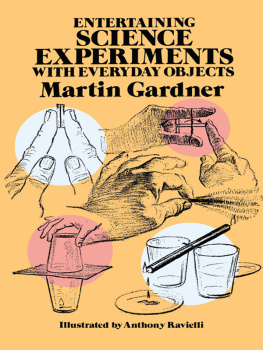
HOW THE
World
LOOKS TO A
Bee
HOW THE
World
LOOKS TO A
Bee
AND OTHER
MOMENTS OF SCIENCE
Edited by
Don Glass
INDIANA UNIVERSITY PRESS
This book is a publication of
Indiana University Press
Office of Scholarly Publishing
Herman B Wells Library 350
1320 East 10th Street
Bloomington, Indiana 47405 USA
iupress.indiana.edu
2020 by WFIU/RTVS
All rights reserved
No part of this book may be reproduced or utilized in any form or by any means, electronic or mechanical, including photocopying and recording, or by any information storage and retrieval system, without permission in writing from the publisher. The paper used in this publication meets the minimum requirements of the American National Standard for Information SciencesPermanence of Paper for Printed Library Materials, ANSI Z39.481992.
Manufactured in the United States of America
Library of Congress Cataloging-in-Publication Data
Names: Glass, Don [date] | WFIU (Radio station: Bloomington, Ind.)
Title: How the world looks to a bee: and other moments of science / [edited by] Don Glass.
Other titles: Moments of science
Description: Bloomington, Indiana: Indiana University Press, [2020] | Based on radio scripts from program A moment of science, on public radio station WFIU-FM. | Includes bibliographical references and index.
Identifiers: LCCN 2019011402 (print) | LCCN 2019016209 (ebook) | ISBN 9780253046284 (ebook) | ISBN 9780253046253 (hardback: alk. paper) | ISBN 9780253046260 (pbk.: alk. paper)
Subjects: LCSH: SciencePopular works. | Moment of science (Radio program)
Classification: LCC Q162 (ebook) | LCC Q162 .H7925 2020 (print) | DDC 500dc23
LC record available at https://lccn.loc.gov/2019011402
1 2 3 4 5 25 24 23 22 21 20
Contents
Acknowledgments
The chapters in this book are based on scripts written for the WFIU radio series A Moment of Science by Barbara Bolz, Rory Boothe, Amy Breau, Danit Brown, Stephen Fentress, Luca Fitzgerald, Don Glass, Susan Linville, Heather Love, Sara Loy, Victoria Miluch, William Orem, Paul Patton, Michelle Ross, Jeremy Shere, Eric Sonstroem, and Don Ulin.
HOW THE
World
LOOKS TO A
Bee
Does NutraSweet Have Calories?
Picture this: One day, a coworker unexpectedly showered you with complimentsyour tie, your hair, your shirt. She was normally quite friendly, but this was over the top. You asked her why she was being so sweet, and she explained that she had been reading about artificial sweeteners and had decided to be artificially sweet that day. You hinted that she was laying it on a bit thick, and she pointed out that thats what artificial sweeteners do as well.
She elaborated by explaining that saccharin and sucralose, which is also known as Splenda, are hundreds of time sweeter than sugar. And aspartame, also known as NutraSweet, is about 160 times sweeter. That means that one teaspoon of aspartame is the same as 160 teaspoons of sugar. This sweetness is why you can add aspartame to your food without adding calories.
Not to be outdone in the know-it-all department, you suggested she might be confusing two issues. The first was how sweet a substance tastes, which has to do with how well the molecules that make up this substance chemically bind with the sweet taste receptors in our mouth. The second was the amount of energy released when we metabolize, or digest, this substance, which is measured in calories. So the reason saccharin and sucralose have no calories is because our bodies dont metabolize them.
She replied that in fact we do metabolize aspartame, and it breaks down into chemicals that have a caloric value.
However, you thought you had her when you replied that diet soda is sweetened with aspartame and has no calories.
But it wasnt over yet, because she replied by showing thats where the degree of sweetness comes in. Because aspartame is 160 times as sweet as sugar, you only need to use a fraction of the amount of sugar youd have to use otherwise. This amount is so small that its insignificant in terms of calories.
You had to agree that was, well sweet.
Further Reading
Purves, William K. How Can an Artificial Sweetener Contain No Calories? Scientific American. Accessed June 4, 2019. https://www.scientificamerican.com/article/how-can-an-artificial-swe/.
WebMD. Stevia and Sugar Substitutes. Last reviewed February 16, 2019. https://www.webmd.com/diet/stevia-sugar-substitutes#1.
A Water Magnifier
Punch a hole about an eighth of an inch in diameter in the bottom of a paper or foam cup. Now push the cup down into a deep bowl of water. Look down into the cup while you push. Of course youll see water come in through the hole you punched. But as the cup fills, youll notice something else. Youll notice that the hole in the bottom of the cup appears magnified. You can make the hole appear bigger by pushing down harder on the cup. Push down more gently, and the magnification is reduced.
This happens because rays of light are bent when they cross from one medium to another. In this case, rays of light that make up the image of the hole in the bottom of the cup are bent as they cross from water into air. The rays are bent in just the right way to create a magnified image of the hole from your point of view.
The reason those light rays bend in that particular way has to do with the shape of the water surface. When you push down on the cup, water spurts upward through the hole in the bottom. That upward-spurting stream of water makes a bulge in the water surface more or less like the bulge in the surface of a glass magnifying lens. By varying the downward pressure on the cup, you can vary the size of the bulge in the water surface. That, in turn, varies the amount of magnification.
Further Reading
McMath, T. A. RefractionA Surface Effect. Physics Teacher 27, no. 3 (March 1989). https://doi.org/10.1119/1.2342712.
Conversation at a Crowded Party
I dont know what she sees in him.
Beg your pardon?
I said, I DONT KNOW WHAT SHE SEES IN HIM.
An article published in 1959 in the Journal of the Acoustical Society of America presented a rough theoretical analysis of sound levels at cocktail parties. The author, William MacLean, analyzed the problem of carrying on a conversation in the presence of background noise from other conversations, and he made a prediction you can check for yourself.
At the beginning of a party, when few guests are present, quiet conversation is possible. As more guests arrive, you have to talk louder and louder to override the increasing background noise.
MacLeans calculations predicted that when the number of guests at a party exceeds a certain maximum determined by the size and other characteristics of the room, merely talking louder is of no avail in continuing your conversation. You just force everybody else to talk louder. The ensuing increase in background noise soon drowns you out unless you move closer to the person youre talking tocloser than you might get in another situation. The acoustics of real rooms are so complex that its practically impossible to say exactly when this need to get closer will set in, but MacLean predicted the moment will occur at some point as more and more people arrive.
Someone may temporarily quiet a loud party, perhaps to introduce the guest of honor. But, MacLean found, even if everyone tries to talk quietly afterward, dialogues like the one we began with eventually drive the background noise back up to its earlier level. A crowded party remains loud until guests begin to leave.
Next page






